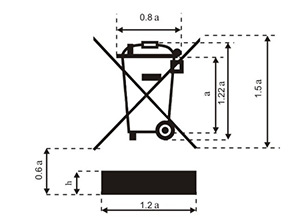What is the WEEE directive?
As the market for electrical and electronic equipment (EEE) continues to expand, innovation cycles are being compressed. Despite the content of hazardous components of EEE such as mercury, cadmium, lead, hexavalent chromium and polychlorinated biphenyls (PCB) being a major concern, manufacturers may not fully understand the regulatory requirements under the WEEE Directive. A lack of compliance with these directives will result in loss of market access.
Electrical and electronic equipment represents the fastest-growing source of waste in the European Union (EU). This waste often contains hazardous substances that can contribute to land contamination, ground water pollution and health risks to consumers. Issued in 2003, EU Directive 2002/96/EC, Waste Electrical and Electronic Equipment (WEEE), was implemented to reduce the creation of electrical and electronic waste and to encourage the recovery, reuse and recycling of electrical and electronic products. The Directive is aimed at contributing to sustainable production and consumption, and seeks to improve the environmental performance of all entities involved in the lifecycle of electrical and electronic equipment.
2002/96/EC Waste Electrical and Electronic Equipment Directive
August 13, 2005, the EU market circulation of electrical and electronic equipment manufacturers must legally assume responsibility for the cost of recycling scrapped products, while EU member states have the obligation to develop their own plans for the recovery of electrical and electronic products, the establishment of relevant Complementary recycling facilities allow end-users of electrical and electronic products to dispose of end-of-life equipment conveniently and freely.
Certification mark
WEEE certification mark logo height of at least 7mm

WEEE directive applies to the following electrical and electronic products:
Large household appliances, small household appliances, information technology and telecommunications equipment, consumer equipment, lighting equipment, electrical and electronic tools other than large static industrial tools, toys, leisure and sports equipment, medical equipment (all implanted and infected Products), monitoring and control equipment, vending machines. Table 2 (see next page) lists the product categories under each of the above categories of electrical and electronic equipment. This Directive will apply without prejudice to the EU law on safety and health requirements and the EU's special regulations on waste management. Equipment for the protection of important security interests of the EU member states, arms, war supplies are not suitable for this Directive.
Electrical and Electronic Equipment (WEEE) refers to equipment belonging to the categories listed in Table 2 and designed to operate at voltages not exceeding 1000 V AC and not exceeding 1500 V DC, devices that rely on current or electromagnetic fields for normal operation and for the generation of these currents and magnetic fields , Delivery and measurement equipment. WEEE refers to electrical or electronic equipment identified as waste as defined in Article 1 (a) of Directive 75/442/EEC of the
European Union, including all parts that are discarded as part of the product abandonment Ingredients, parts and consumables.
WEEE certified product type
AC1000V, DC1500V the following 10 categories of products
1, large household appliances: refrigerators, washing machines, microwave ovens, air conditioners and so on
2, small household appliances: vacuum cleaners, electric irons, hair dryer, oven, watches and so on
3, IT and communications equipment: computers, fax machines, telephones, mobile phones and so on
4, civilian installations: radio, television, video recorders, musical instruments and so on
5, lighting equipment: In addition to household lighting and other fluorescent lamps, lighting control devices
6, power tools: electric drill, lathe, welding, sprayer and so on
7, toys / entertainment, sports equipment: electric cars, video game machines, automatic gambling machines
8, medical equipment: radiotherapy apparatus, ECG tester, analytical instruments
9, monitoring / control devices: smoke detectors, incubators, factory monitoring and control machines
10, vending machines